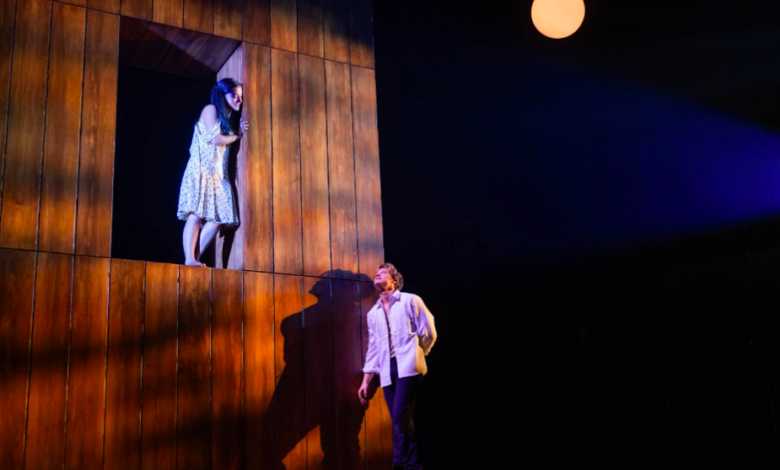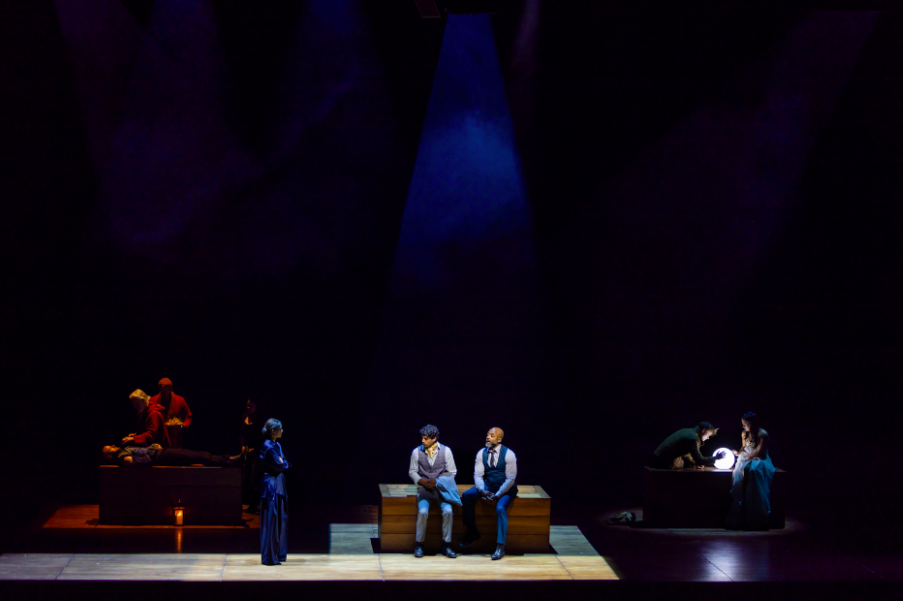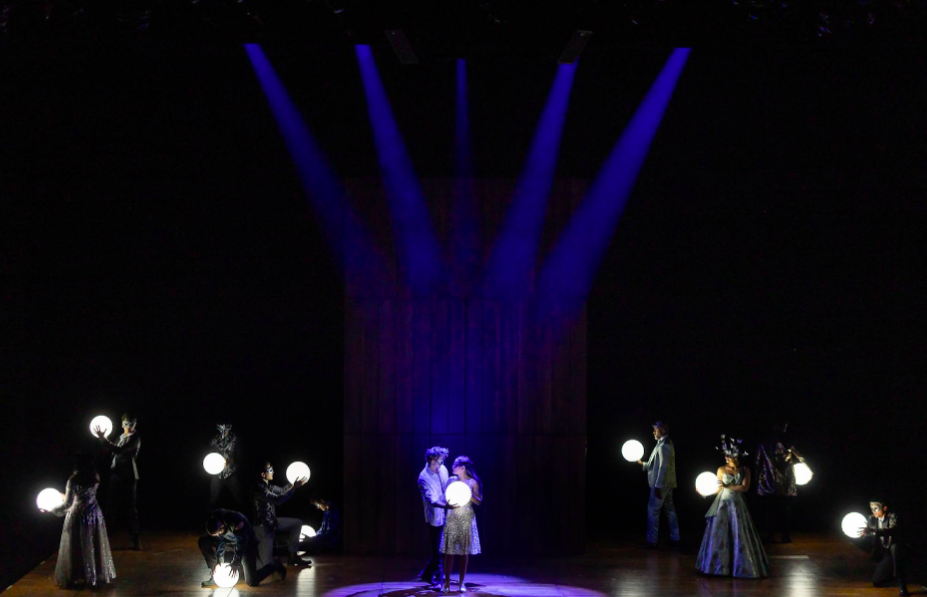Rate and Review: Romeo and Juliet

Catherine Hughes ‘28 / Emertainment Monthly Staff Writer
Shakespeare is just one of those things that never goes away. His many plays and stories have truly stood the test of time and have found a place in the 21st century, one of his most popular and long standing plays being Romeo and Juliet. Recently there’s been a resurgence of Romeo and Juliet productions: Broadway, London’s Duke of York’s theater, and Boston’s American Repertory Theater have all housed some of the most anticipated productions of 2024. Being in Boston, I was able to see the production held at the American Repertory Theater in Cambridge. Romeo and Juliet is one of the most famous stories ever told, but if you’re unfamiliar, it follows two young lovers from warring families. They fall in love and even marry until a fatal incident leaves young Romeo (Rudy Pankow) at risk. Unable to be together, Romeo and Juliet (Emilia Suárez) face the ultimate tragic ending. This play has been so timeless because it involves themes that relate to modern day, things even a 21st century young person can resonate with. While I don’t think this production was perfect—no interpretation can be—I found that this performance was able to capture the Shakespearean atmosphere while retaining its relatability.
This was possibly one of my favorite plays to watch. The production quality, the creative liberties, and the set design were all beautifully done. One of the first things I found myself thinking about after the experience was the lighting, specifically in the scene where Romeo and Juliet meet. Instead of using spot lights to signify the connection, the cast carries around these glowing light orbs. There is a whole dance sequence, the lights seem to even be floating at some points. The first interaction between Romeo and Juliet, they share a light orb. This was such a beautiful way to portray love and emotion. The symbolism in the lights perfectly executed the idea of love, and the visuals of Romeo and Juliet being the only two who shared.
Another aspect of this production I found myself thinking about was the physical set. The set centered around a wooden moving structure that was hollow in the middle. The structure centered most scenes and provided space for Romeo and Juliet to meet intimately, a physical barrier during scenes that required one, and also as a signifier for scene changes. During the second act of the play the set is used infrequently, and ultimately forgotten. The set provided stability for the story, something to center everything. I found it very intriguing that when the story makes the dramatic switch from comedy to tragedy, the set loses its main focal point. I thought that this could possibly signify a shift, the loss of stability for the characters and the world around them. Regardless of the symbolism, the set design was very simple but effective. The movement of the wooden structure was eye-catching but not overwhelming. It went beyond the idea of simply sitting on the stage, without disrupting the movement and flow of the physicality in the play.
One of the most memorable moments was the end of the play. There have been many different interpretations, but this one was one of my favorites. The play ends with the rest of the cast pulling out grass patches from beneath the floor, the stage fills with flowers and the lighting becomes sweet, almost like the sun. Romeo and Juliet are centered and dancing on a platform in the middle of the stage, until finally surrounded by everyone else, they begin to tend to the same plant, a nod back to their original meeting. I find that the more dramatic endings tend to be so provoking and something that hammers in the idea of the tragic shift. However this sweet ending has the same amount of impact as others, but in a much more subtle way. It is very difficult to create emotional impact without having explosive dramatic acting and imagery. That is precisely the reason why this specific ending became one of my favorites. This interpretation had a very hard hitting and emotional ending, but didn’t need to have on-stage tantrums to get that effect. I appreciate the way this interpretation was able to take on its own life while also staying true to the original text.
I did love this portrayal, but not everything can be perfect. The one thing that stood out to me that I wished to change would be costuming. The play made an effort to make the clothes a bit more modern, especially with some of the younger characters like Mercutio. I found that while some of the costuming was very suited for the character, Romeo and Juliet’s outfits enhanced their youth and individuality, but others had costumes that didn’t seem to fit with the actual character. Juliet’s parents wore very nice clothes, it was a clear symbol of their status and their role in the play, however it seemed more so that the costume department found “adult” clothes and gave it to the actors as opposed to finding costumes that represented the individual values and identity of the characters. Many of the older characters were dressed in very professional attire. The men in suits and the women in tweed business dresses. This show had very little for me to critique, however the costuming was something I do think could’ve been improved upon.
Overall, this production was very well executed. There was very little to complain about for this production, and while I am unable to compare it to other current productions, from what I’ve seen it has its own standing in the modern resurgence of Romeo and Juliet plays.

